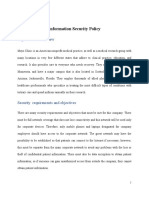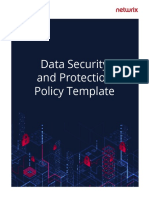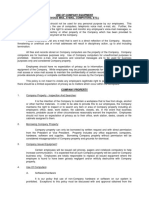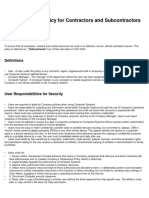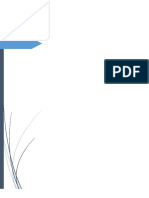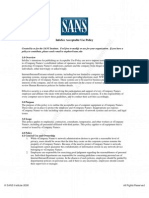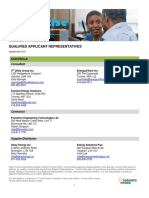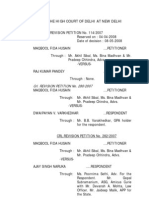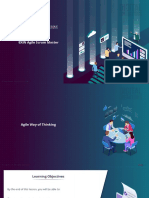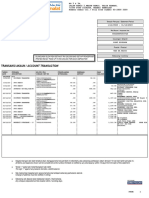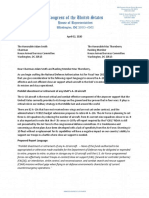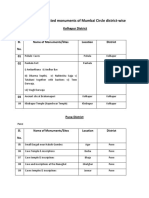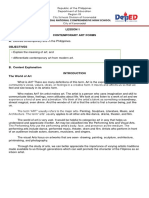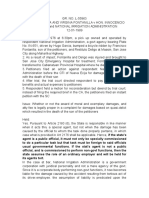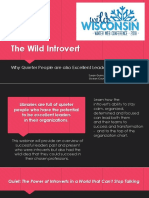0% found this document useful (0 votes)
20 views9 pagesSample Security Policy
This document outlines the comprehensive security policy for Example Company Ltd (ECL), emphasizing the protection of corporate and client data through physical and electronic security measures. It details the responsibilities of employees, security protocols, and the importance of confidentiality, including the use of Non Disclosure Agreements. The policy also covers equipment security, access control, password management, and procedures for handling sensitive information and waste.
Uploaded by
ipcsafetyofficerCopyright
© © All Rights Reserved
We take content rights seriously. If you suspect this is your content, claim it here.
Available Formats
Download as PDF, TXT or read online on Scribd
0% found this document useful (0 votes)
20 views9 pagesSample Security Policy
This document outlines the comprehensive security policy for Example Company Ltd (ECL), emphasizing the protection of corporate and client data through physical and electronic security measures. It details the responsibilities of employees, security protocols, and the importance of confidentiality, including the use of Non Disclosure Agreements. The policy also covers equipment security, access control, password management, and procedures for handling sensitive information and waste.
Uploaded by
ipcsafetyofficerCopyright
© © All Rights Reserved
We take content rights seriously. If you suspect this is your content, claim it here.
Available Formats
Download as PDF, TXT or read online on Scribd
/ 9











